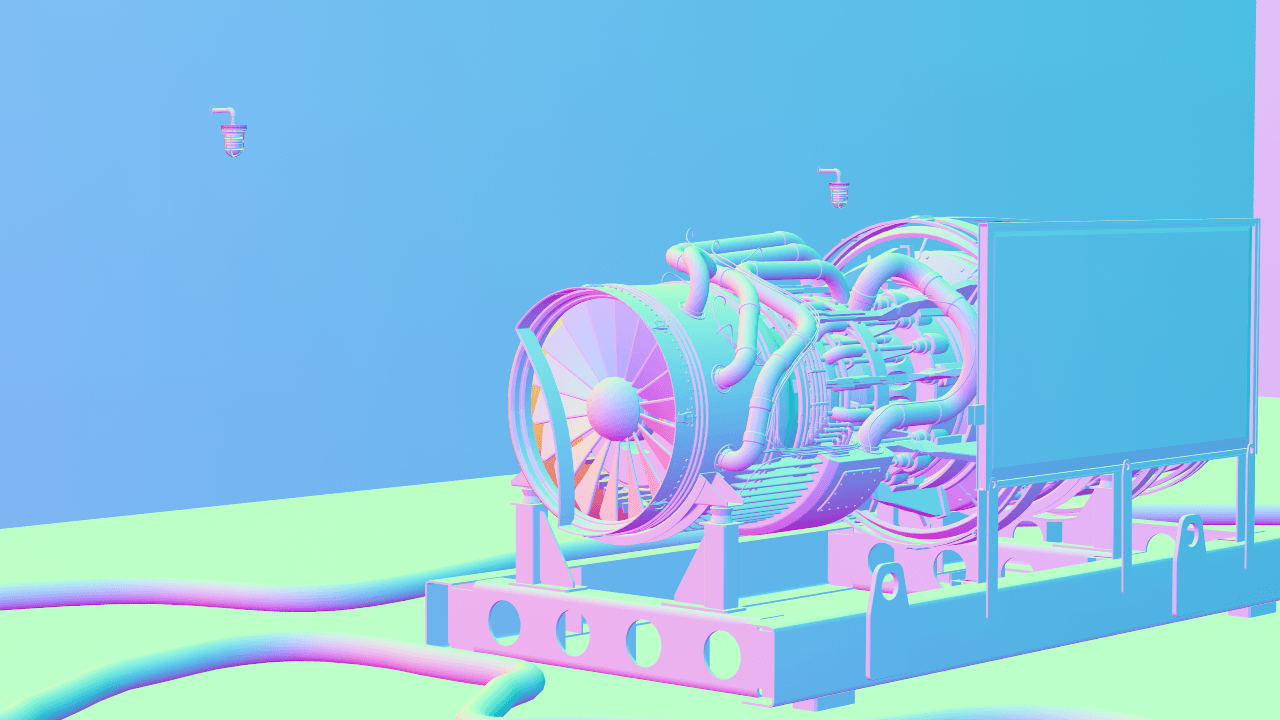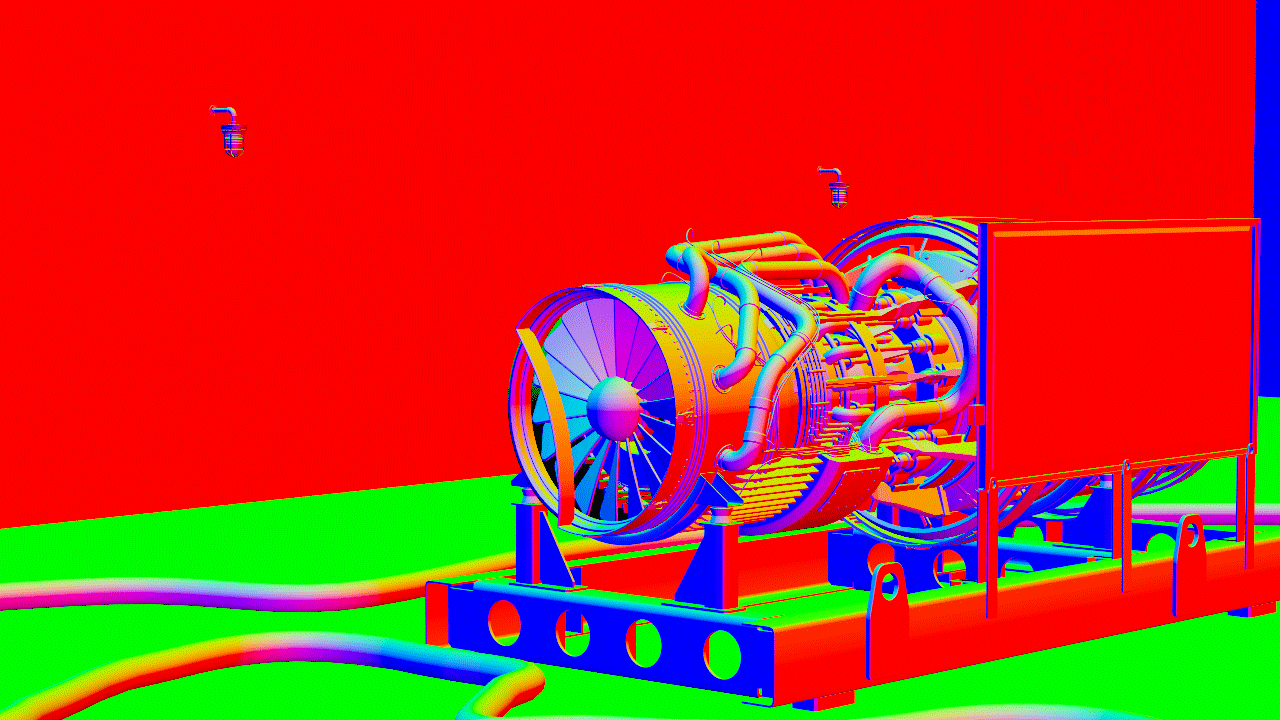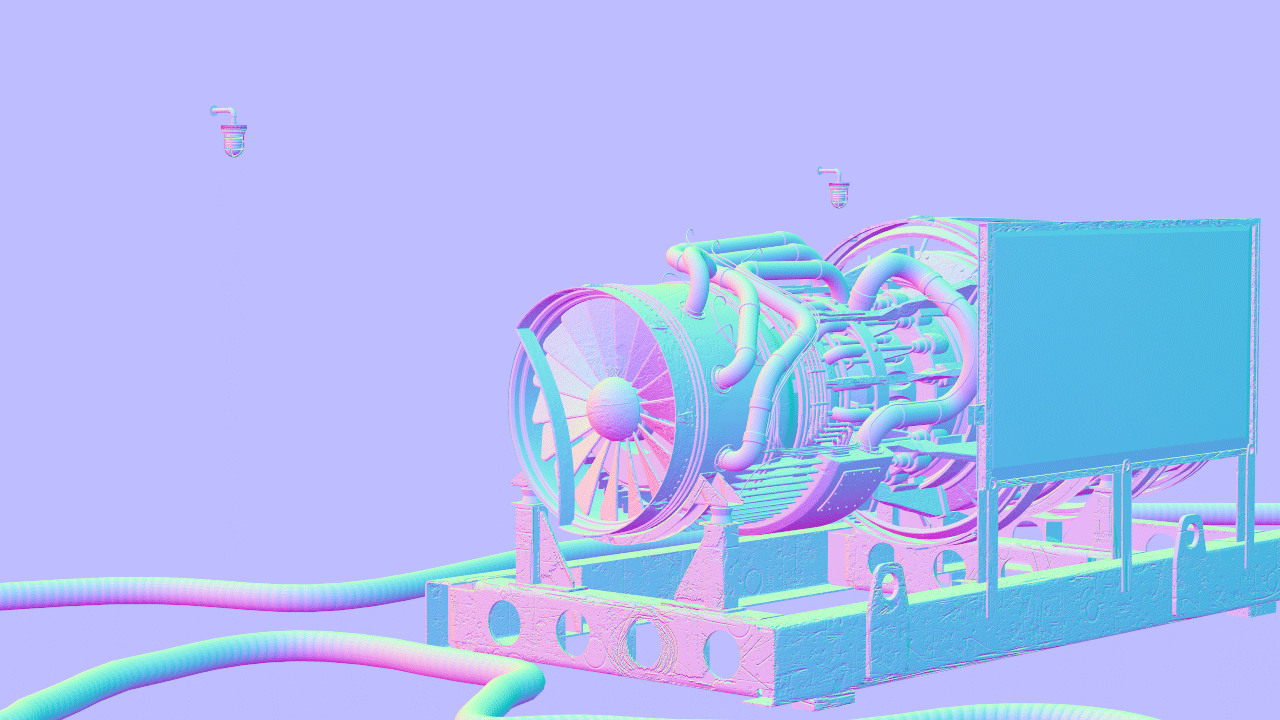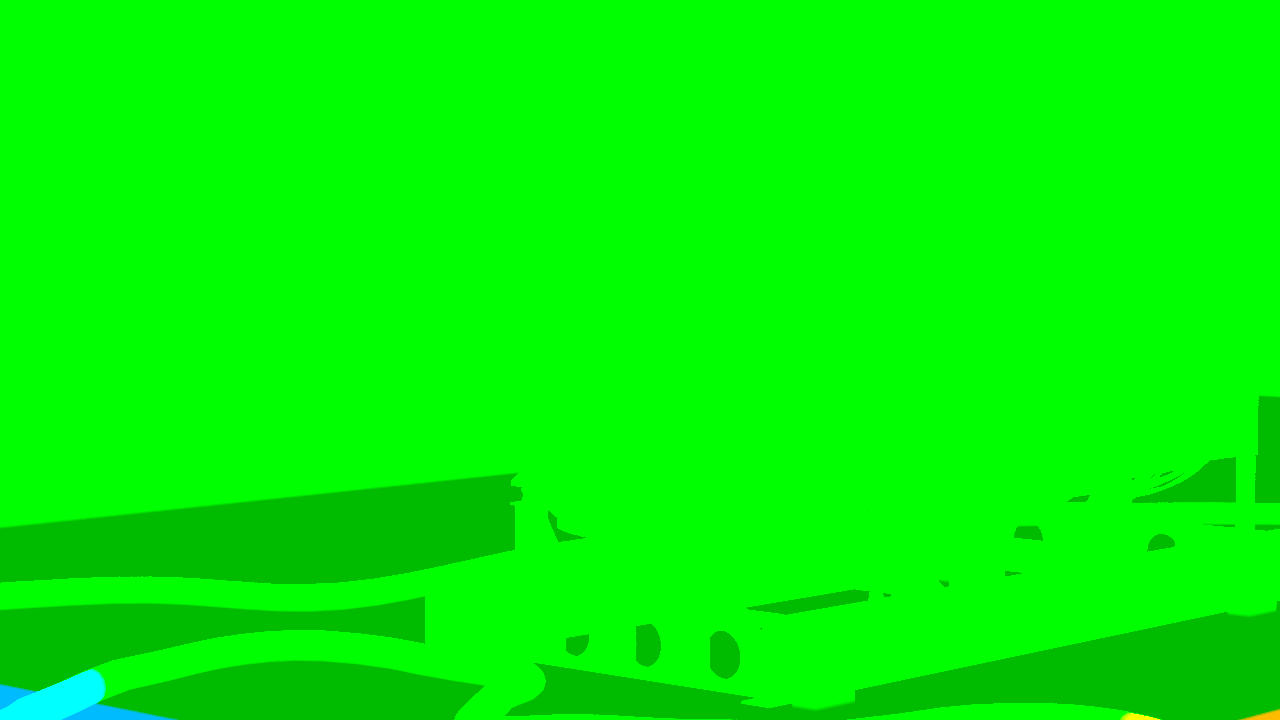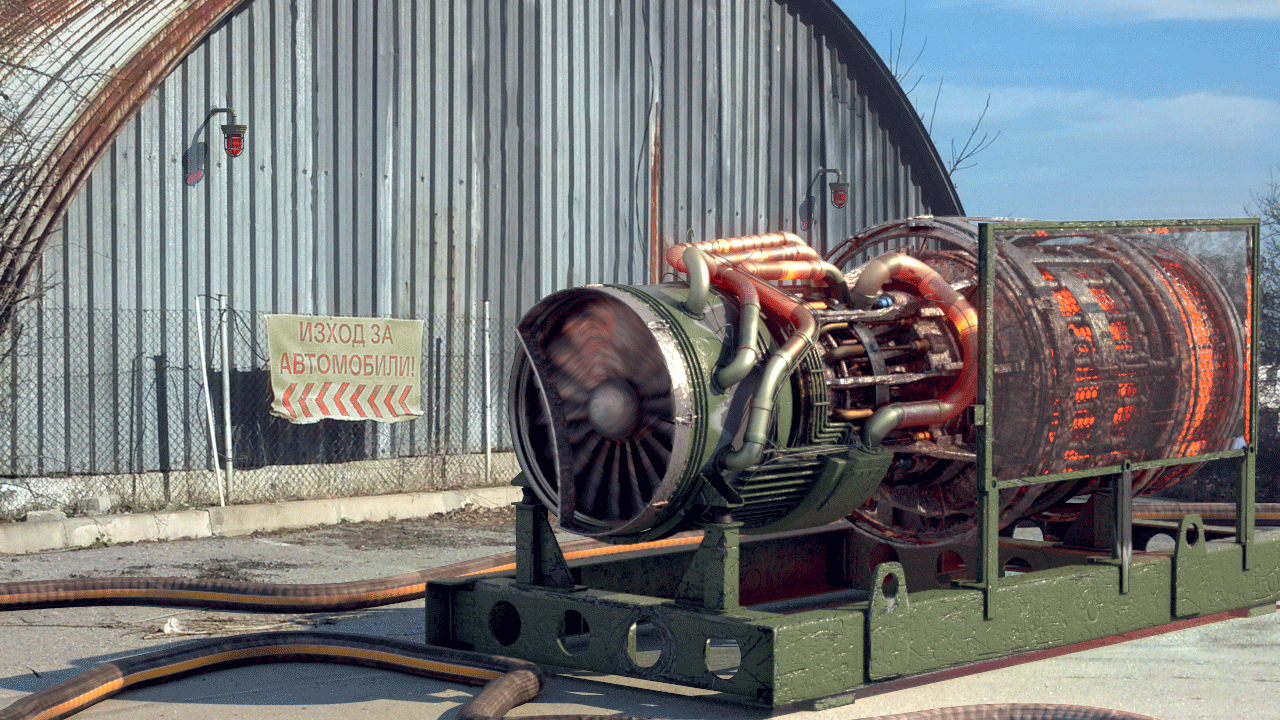Page History
This page provides information on the Normals Render Element which creates a normals image from surface normals in the scene.
Page Contents
| Table of Contents | ||||
|---|---|---|---|---|
|
Overview
...
| Section | |||||||||||||||||
|---|---|---|---|---|---|---|---|---|---|---|---|---|---|---|---|---|---|
|
...
World Normals renders all visible objects in the scene with a color ramp based on the world space X, Y, and Z coordinates of their polygonal normal, and represents the actual 3D coordinate in space. These can be both positive and negative, so a floating point image format should always be used when saving this output.
Common Uses - Relighting
...
The Normals Render Element is useful for changing the appearance of lighting in a scene in a composite without the need for re-rendering.
In the example below a relighting workflow is used at a composite level to change the lighting in the scene. Note that it does not create any extra shadowing. This example is exactly the same under the hood as that shown in the Bump Normals Render Element page with the only change being that the Normals render element was used here instead of the Bump Normals render element.
| Section | ||||||||||||||||||||
|---|---|---|---|---|---|---|---|---|---|---|---|---|---|---|---|---|---|---|---|---|
|
| Section | ||||||||||||||||||||
|---|---|---|---|---|---|---|---|---|---|---|---|---|---|---|---|---|---|---|---|---|
|

